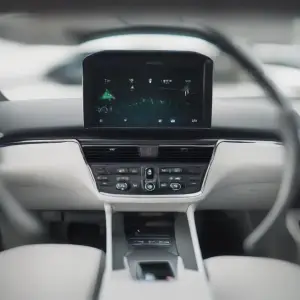Car Autopilot: The Ethical Dilemma

What Is Car Autopilot?
What Is Autopilot in Cars?
Autopilot systems in vehicles use advanced technologies like radar, cameras, and sensors to assist drivers with certain tasks like staying in a lane or maintaining a set speed on the highway. Many new cars today offer autopilot features that allow for partial automation of driving.
How Does It Work?
Autopilot systems rely on sensors and cameras to detect the road conditions and surroundings. The inputs are analyzed by an on-board computer that then controls acceleration, braking, and steering to keep the vehicle on a set path. Many autopilot systems require the driver to keep their hands on the wheel at all times in case they need to quickly regain control.
Some common autopilot features in today’s vehicles include:
- Adaptive cruise control: Automatically adjusts your speed to maintain a safe distance from the car in front of you.
- Lane keeping assist: Makes minor steering corrections to help keep your vehicle centered in its lane.
- Traffic jam assist: Helps with steering, braking, and acceleration in slow-moving traffic.
- Summon: Allows you to remotely move your vehicle forward and backward using a smartphone app.
While autopilot features provide more convenience and help reduce driver fatigue on long drives or in heavy traffic, there are also important ethical concerns to consider regarding over-reliance on the technology and loss of driving skills. Responsible drivers should always remain alert and ready to take over control of the vehicle when using autopilot systems.
The Pros of Autopilot – Increased Safety and Convenience
Autopilot can make driving so much safer and convenient for you. Think about it – some of the leading causes of accidents are drowsy, distracted or drunk drivers. With an autopilot system handling the driving, your chance of getting into an accident due to human error drops dramatically.
Fewer accidents and injuries
Studies show over 90% of car crashes are caused by human mistakes. By taking over for the human driver, autopilot can help reduce the number of accidents and resulting injuries or fatalities on our roads. Your autopilot system has a 360 degree view of the road and vehicles around you, and reacts faster than any human.
Less stress and more free time
Driving in heavy traffic or on long road trips can be stressful and tiring. With autopilot engaged, you’re free to rest, work or relax. You could use the time to make calls, read reports, play games with the kids or simply enjoy the scenery. Imagine arriving at your destination refreshed and recharged instead of frazzled from fighting traffic and staying laser-focused on the road for hours.
Mobility for all
For some people, the inability to drive prevents them from living independently. Autopilot could provide mobility options for elderly, disabled or visually impaired individuals, allowing them to travel on their own safely.
While autopilot does pose some concerns regarding job security for drivers and ethical considerations in the event of an unavoidable accident, the potential benefits to safety, reduced stress and increased mobility and independence are huge. Overall, when thoughtfully implemented, autopilot can have an enormously positive impact.
The Cons of Autopilot – Complacency and Overreliance
Autopilot systems in cars are designed to make driving easier and safer. However, relying too heavily on the autopilot can lead to complacency and overreliance, potentially increasing the risk of accidents.
Complacency
It’s easy to become complacent when you have an advanced autopilot system handling most of the driving for you. You may start to zone out or become distracted by electronic devices. But autopilot systems today still require an attentive human driver to take over in many situations. If you’re not paying close attention, you won’t be ready to react in time to avoid an accident. Several studies have shown that people in self-driving cars tend to be less vigilant and slower to respond in emergencies. Constantly monitoring the road and your surroundings is key to safe driving with autopilot.
Overreliance
An overreliance on the autopilot system can also be dangerous. These systems have limitations and cannot handle every possible driving scenario. They may have trouble in poor weather conditions like heavy rain, snow or fog. Autopilot also struggles in construction zones or on roads that are not clearly marked. If you put too much faith in the autopilot and don’t stay alert, you won’t be ready to take control of the vehicle when the system reaches its limits. It’s important to understand the specific abilities and limitations of your vehicle’s autopilot system before enabling it. Always be ready to take over driving at any time.
While autopilot technologies promise increased safety and convenience, complacency and overreliance remain risks. The key is using these systems responsibly – stay vigilant, keep your hands on the wheel, and be ready to take over driving whenever necessary. When autopilot is used properly as an aid rather than a replacement for an attentive human driver, it can help reduce accidents and make driving less stressful. But ultimately, safe driving is still in our hands.
Ethical Concerns With Autopilot Technology
Autopilot technology in vehicles raises some important ethical concerns that should be considered. As this technology continues to advance rapidly, we must ensure it aligns with human values and priorities.
Safety of passengers and others
Autopilot systems are designed to handle the driving tasks under ideal conditions, but they cannot account for unpredictable human behavior or complicated traffic scenarios. There is a risk of the systems making errors that could endanger passengers, pedestrians or other drivers. Strict testing and safety standards need to be put in place to minimize harm.
Job loss for human drivers
Widespread adoption of fully autonomous vehicles could significantly reduce the need for human drivers like taxi, Uber and truck drivers, resulting in major job losses. This could negatively impact many people’s livelihoods and financial stability. Policies may be needed to help workers transition to new types of jobs.
Bias and unfairness
The algorithms and data used to develop autopilot systems could reflect and even amplify the biases of their human creators. This could lead the systems to behave in unfair or unjust ways towards certain groups. Companies must make diversity and inclusion priorities in their teams to help address this concern.
Lack of transparency
It can be difficult to understand exactly how autopilot systems make their decisions due to their complexity. This lack of transparency and explainability is problematic, as it prevents accountability if something goes wrong. Regulations should require companies to be more open about how their systems work so any issues can be addressed.
While self-driving cars could provide many benefits, we must consider these ethical dilemmas and put proper safeguards in place. Overall, the well-being of all people should be the top priority as this technology progresses. With open discussion and proactively addressing areas of concern, autonomous vehicles have the potential to be developed and used responsibly. But we must make ethics a key part of the conversation.
Who Is Responsible in an Autopilot Accident?
When an accident occurs with an autopilot system engaged, who takes responsibility? This question involves many ethical considerations regarding accountability and liability.
The Vehicle Owner
As the owner of the vehicle, you have a reasonable expectation that any system within the vehicle, including the autopilot, will operate safely and as intended. However, you also have a responsibility to properly maintain the vehicle and stay engaged while the autopilot is operating, ready to take over the wheel at any time. Failure to do so could be seen as negligent. If an accident happens due to a lack of proper maintenance or the owner not paying attention, the owner may share partial liability.
The Vehicle Manufacturer
The company that produces the autopilot system and installs it in the vehicle also has an obligation to ensure it is designed safely and rigorously tested before being deployed. If a flaw in the system design or software leads to an accident, the manufacturer could face legal consequences and damages. Manufacturers work hard to foresee potential issues and have systems in place to remotely monitor vehicles and push out over-the-air updates when needed. However, there is always a possibility of unforeseen scenarios that the system may not handle properly.
Other Parties
In some cases, other parties could share responsibility in an autopilot-related accident. For example, if poor road conditions, construction, or infrastructure issues contributed to the incident, local governments or contractors may hold some liability. Or, if a component from a third-party supplier was flawed or malfunctioned, that company may need to take responsibility for their role.
Sorting out accountability in an autonomous vehicle accident is extremely complex with many variables to consider regarding who or what caused the failure. As autopilot systems become increasingly advanced and autonomous vehicles gain mainstream popularity, discussions around ethics and responsibility will be crucial to ensuring passenger safety and fair outcomes. The lines of liability will likely remain blurred for some time to come.
Autopilot Biases and Limitations
Autopilot systems are not without their limitations and biases. As advanced as the AI and sensors are, autopilot still has a narrow, limited view of the world.
Limited Sensors
Autopilot relies primarily on cameras, radar, and ultrasonic sensors to detect the surrounding environment. However, these sensors have blind spots and limitations in their range and capabilities. They cannot detect everything around the vehicle at all times. This could allow hazards to go undetected until it’s too late.
Lack of Context
The AI powering autopilot lacks the full, complex context that human drivers have. It cannot understand subtle social cues or predict how other drivers and pedestrians will behave. The AI cannot read subtle body language or understand complex emotional contexts. This could lead the autopilot system to make poor judgments in ambiguous or complex driving scenarios.
Potential for Bias
Some experts argue that AI systems can reflect and even amplify the implicit biases of their human designers. If the teams building the autopilot systems lack diversity or hold certain biases, those biases could potentially find their way into the AI. The algorithms may make unfair or unequal decisions in how they handle certain driving scenarios. More work is needed to identify and address these issues to ensure autopilot systems are as fair and unbiased as possible.
Overreliance on Technology
Some drivers may become overreliant on autopilot and fail to stay engaged and ready to take over control when needed. This could pose risks if the autopilot system encounters a scenario it cannot properly handle and the human driver is unable to take over quickly enough. Drivers need to maintain a healthy level of skepticism about autopilot’s capabilities and stay alert even when the system is engaged.
While autopilot promises more convenience and fewer accidents, we must address these limitations and ethical issues to ensure the safe and responsible development of this technology. The future is autonomous, but we’re not there just yet. For now, the human driver still plays a vital role.
Regulation and Oversight of Autopilot Systems
Regulating and overseeing autopilot systems in vehicles is crucial to ensure safety, accountability and consumer trust. As autopilot technology becomes more advanced and autonomous vehicles inch closer to reality, oversight and governance will be paramount.
Government Regulation
Federal agencies like the NHTSA (National Highway Traffic Safety Administration) develop guidelines and regulations for vehicle safety standards in the US. They will likely play a significant role in crafting policies and rules for self-driving cars and their autopilot systems. Regulations may include requirements for data recording, backup systems in case of technology failures, and protocols for transferring control between the AI system and a human driver.
Industry Standards
Industry groups and associations work to establish voluntary standards for their members. For autopilot systems and autonomous vehicles, groups like the Auto Alliance and Global Automakers can help develop best practices for design, testing, data use and more. While not legally binding, these standards can shape how companies approach developing and deploying the technology.
Consumer Education
Educating consumers and the public about autopilot systems and self-driving cars is key. People need to understand the capabilities, limitations and appropriate uses of the technology to have realistic expectations and stay safe. Manufacturers should provide clear information about their specific autopilot or autonomous systems so drivers know when they must take control of the vehicle. Standardized ratings or classifications could also help compare different vehicles’ autonomous capabilities.
Oversight and governance of autopilot technology won’t be easy, but it’s necessary to balance innovation and safety. With government regulation, industry standards and consumer education, self-driving cars and advanced autopilot systems can be developed and adopted responsibly. The rules of the road for autonomous vehicles are still being written, but progress is being made to ensure they’re eventually safe, ethical and accepted.
The Future of Self-Driving Cars
The future of self-driving cars is both exciting and uncertain. As the technology behind autonomous vehicles continues to advance rapidly, fully self-driving cars may become widely available as early as 2025. However, many open questions remain about how this will impact our lives and society.
Self-driving cars have the potential to drastically reduce the number of car accidents caused by human error and make mobility more accessible to children, the elderly, and people with disabilities. They could also improve traffic flow and reduce urban congestion by enabling vehicle platooning and more efficient traffic light timing.
On the other hand, self-driving cars introduce new risks and ethical dilemmas. There will likely be a difficult transition period where human drivers, autonomous vehicles, and semi-autonomous vehicles share the roads, increasing the potential for accidents. Automakers and tech companies will have to determine how self-driving cars should be programmed to act in emergency situations where harm is unavoidable, such as whether to prioritize the safety of vehicle occupants or pedestrians.
Self-driving cars may significantly impact employment as well. Jobs like taxi drivers, truck drivers, and delivery drivers could be eliminated, while new jobs maintaining and programming autonomous vehicle fleets may be created. This could negatively impact many people’s livelihoods.
Overall, self-driving cars are poised to transform transportation and society in profound ways. Policymakers, companies, and individuals will have to work together to ensure the safe and responsible development of this technology and help positively shape its impact. The future remains unclear, but one thing is certain – self-driving cars are coming, and they’re coming fast. We must be ready.
Autopilot FAQs: Your Top Questions Answered
Autopilot FAQs: Your Top Questions Answered
Have questions about autopilot features in cars? We’ve got answers to your most frequently asked ones here.
- How does autopilot work? Autopilot systems use sensors, cameras, GPS and software to sense the vehicle’s surroundings and control aspects like steering, acceleration and braking with limited human input. The human driver still needs to remain alert and ready to take over driving at any time.
- Is autopilot the same as self-driving? No, autopilot and self-driving vehicles are not the same. Autopilot provides limited automation and still requires an attentive human driver. Self-driving or “driverless” cars aim to provide full automation without any human driver input. We are still a few years away from fully self-driving vehicles.
- What vehicles currently offer autopilot? Many luxury vehicle brands offer autopilot features, including Tesla, Cadillac, Audi, BMW, Mercedes-Benz and Volvo. The exact features vary between makes and models, ranging from adaptive cruise control to lane keeping assist and automated parking assist. Only Tesla currently offers “Full Self-Driving” capability, but it still requires an attentive human driver.
- Is autopilot safe? Autopilot can improve safety by assisting with tasks like emergency braking, but the technology is not yet fully mature or foolproof. According to studies, over 90% of car crashes are caused by human error, so autopilot has the potential to reduce accidents if human drivers remain alert and ready to take control. However, there is still a possibility of system errors or failures, and drivers should use autopilot cautiously until the technology is perfected.
- When will fully self-driving cars be available? Most experts estimate fully self-driving or driverless vehicles will not be widely available for 5-10 years or more. There are still challenges to overcome around technology, regulations, infrastructure and consumer acceptance. For now, enjoy the benefits of advanced driver assistance features, but still keep your hands on the wheel and your eyes on the road. The future isn’t quite here yet!
Conclusion
You’ve read about the exciting new autopilot technologies coming to cars and some of the ethical issues around their development and use. While self-driving cars promise increased safety, efficiency and convenience, they also introduce risks and moral quandaries that companies and regulators must grapple with. How do we ensure these systems are rigorously tested and secured from hacking? How much control and oversight should humans maintain? There are no easy answers, but by thinking critically about these questions now we’ll be in a better position to take advantage of the benefits of autopilot while avoiding potential downsides. The future is coming – are we ready to hand over the wheel? Only time will tell. But for now, keep your eyes on the road!
















No Comment